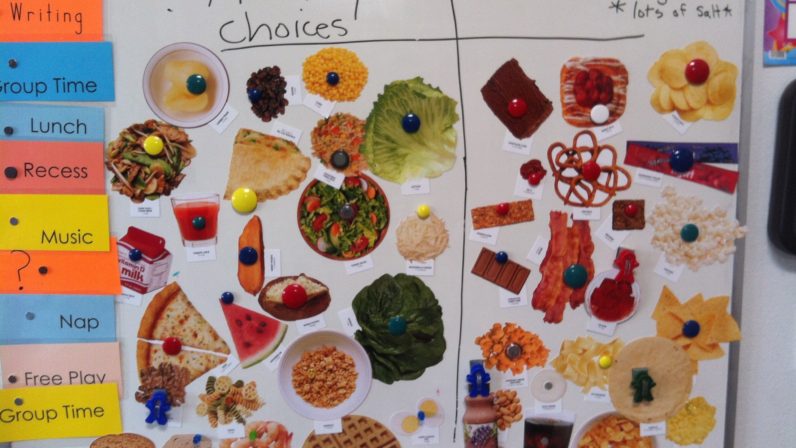written by Emily Murphy, Seed PreK teacher (2013)
Growing up in Wisconsin gave me a different definition of healthy food than most of our population gets today. A minimum of three glasses of cow’s milk a day were required for our survival. It was important to be a little overweight, so that if you got sick and couldn’t eat you wouldn’t waste away. Vegetables were necessary at dinner time, although if they were covered in cheese sauce or buried in piles of meat, they didn’t lose any nutritional value. Juice counted as a fruit.
I could go on all day.
What was worse was that I was a picky eater. My dad was a staunch believer in not letting children leave the dinner table until we cleaned our plates, which translated to a lot of nights of me, playing with my food at the table, while the rest of my family had moved on.
It wasn’t all bad. We had a refrigerator of soda, ice cream, and treats at our disposal, which I think in the end granted me the ability to not see sweets as such a big deal. I wasn’t denied anything, and with this control was given the chance to make my own choices as I got older. My mom was also big into exposing us to the unexpected. She would come home from the store with exotic, exciting fruits like Asian pears and starfruit, which would motivate my brother and I to seek out other fun, healthy options.
School was never a venue for learning about nutrition. We brought our own lunches and snacks, and beyond things like bake sales did nothing notable with food. As a teacher at the Seed, I count myself and the students here among the fortunate to be able to broach this topic in the classroom. These two weeks of focusing on food has allowed us to not only have discussions about healthy choices, but share what we know with each other. Last week gave me great insight into the learning already going on in so many of Seed kids’ homes. Discussions about what makes something a treat or a healthy food delved deeper than I expected:
“Well, if the pizza has lots of cheese, it would be a treat.”
“Gravy sometimes has a lot of fat and salt, but this picture doesn’t show that, so I think it’s healthy.”
“Go-gurts are made in a factory and have lots of sugar, so that is definitely a treat.”
“The waffle is whole wheat and doesn’t have any syrup, so it’s healthy.”
Maple syrup was debated. It came from a maple tree, so it was natural, but it was definitely sweet. Kids thought it was healthier than regular sugar, but it was still sweet. It was decided that even natural things can be treats sometimes.
These types of ideas are coming out of homes where food is important and health is a priority – homes where kids can monitor what they put in their bodies and make responsible choices. It’s a new generation, and it’s also a special group: one I’m proud to be a part of.

